Zone
Crash of a Piper PA-31-350 Navajo Chieftain off Fort Lauderdale: 1 killed
Date & Time:
Jan 1, 2002 at 1802 LT
Registration:
N3525Y
Survivors:
Yes
Schedule:
North Eleuthera - Fort Lauderdale
MSN:
31-7952127
YOM:
1979
Crew on board:
1
Crew fatalities:
Pax on board:
4
Pax fatalities:
Other fatalities:
Total fatalities:
1
Captain / Total hours on type:
72.00
Aircraft flight hours:
7132
Circumstances:
The pilot stated that on the day of the accident he ordered fuel only on the first flight of the day. He said he did not add additional fuel during subsequent flights. He said he flew the accident airplane from Fort Lauderdale Executive Airport, Fort Lauderdale, Florida, to Chubb Cay, Bahamas, to Big Whale Cay, Bahamas, back to the Fort Lauderdale Executive Airport. He said he then departed Fort Lauderdale Executive Airport with his next load of passengers and flew to the North Eleuthera Airport, North Eleuthera, Bahamas, without having refueled, and was returning from North Eleuthera, Bahamas, to the Fort Lauderdale International Airport, when he ditched the airplane off Dania Beach, Florida, in the Atlantic Ocean. When asked whether the fuel on board the airplane had been exhausted, the pilot stated, " the way the engines were acting, it seemed like the airplane ran out of fuel." On scene examination of the airplane, as well as follow on examination of its engines revealed no pre accident anomalies with the airplane or its systems. Information obtained from the FAA showed that at 1757, the pilot contacted FAA Miami Approach Control and advised "minimum fuel, further stating that he was not declaring an emergency at that time. At 1758, the controller responded, passing communications control to the FAA Fort Lauderdale Air Traffic Control Tower (ATCT). In response to the pilot's initial communications call to the Fort Lauderdale ATCT, the pilot was given a clearance to land on runway 09R, and told that he was number one. At 1758:43, the pilot replied, asking if there was any chance of getting runway 27L, and at 1759:17, the controller instructed the pilot to descend at his discretion and remain slightly south of final for landing on runway 27L, and to expect 27L. At 1800:07, the pilot contacted the controller and stated, "two five yankee would like to declare an emergency at this time." At 1800:10, the controller responded, "two five yankee yes sir runway two seven left you are cleared to land the wind zero one zero at six." At 1800:16 the pilot responded acknowledging the wind report, and at 1800:27, the controller asked whether the nature of the emergency was minimum fuel, to which the pilot responded, "exactly two five yankee may be coming in dead stick. At 1800:40, the pilot stated that he had the airport in sight and will try to glide, and at 1801:32, the pilot said "two five yankee I'm going to be short of the shore." At 1802, the pilot ditched the airplane about 300 yards from the Dania Beach shoreline, in the area of John Lloyd State Park, in about 15 feet of water. The occupants of the airplane consisted of the pilot and four passengers. All exited the airplane and one passenger drowned in the Atlantic Ocean when according to the pilot "he was in a state of panic" when he tried to instruct him in the use of the life vest while they was in the water, and subsequently tried to use him for flotation when he tried to help him. All remaining passengers confirmed that the pilot had not given them any pre departure safety related briefing prior to or during the accident flight.
Probable cause:
The pilot's inadequate planning for a Title 14 CFR Part 135 on-demand air taxi flight, and his failure to refuel the airplane, which resulted in fuel exhaustion while en route over the Atlantic Ocean, a power off glide, and ditching in the ocean.
Final Report:
Crash of a Convair CV-580 in Miami
Date & Time:
Dec 6, 2001 at 2258 LT
Registration:
N582HG
Survivors:
Yes
Schedule:
Nassau – Fort Lauderdale – Miami-Opa Locka
MSN:
46
YOM:
1953
Crew on board:
2
Crew fatalities:
Pax on board:
0
Pax fatalities:
Other fatalities:
Total fatalities:
0
Captain / Total hours on type:
1940.00
Copilot / Total hours on type:
271
Aircraft flight hours:
75103
Circumstances:
The airline completed weight and balance and dispatch release forms for the initial flight showed an incorrect fuel load at the time the engines were started. The first officer performed a walk-around before the first flight leg which included checking the fuel tanks. A total of 460 gallons of fuel were added to the fuel tanks, and a delay loading cargo occurred. After both engines were started to begin the first flight, the engines remained operated for between 9-10 minutes before they were secured due to a radio problem. Maintenance personnel reracked the VHF radios, and again the engines were started where the airplane remained on the ramp 3-4 minutes before taxiing to the runway. The airplane remained at the runway hold short area for between 20 and 25 minutes before returning to the ramp due to a radio problem. The engines were secured, and a new VHF radio was purchased and installed. The company did not prepare new dispatch release, or weight and balance forms for the flight taking into account the additional fuel consumed with the engines operating. The engines were started, and the airplane was taxied to the runway and departed for the planned first leg. The airplane landed uneventfully at the destination airport where the cargo was offloaded. The first officer performed a walk-around which included checking the fuel tanks; 300 gallons of fuel were added to the fuel tanks (150 gallons in each side). The flight departed to return and when near the coastline, the flight was vectored to an airport other than the planned destination due to a issue with U.S. Customs. The flight landed uneventfully, and experienced a delay clearing customs. While on the ground before departure on the accident flight, the first officer reportedly performed a walk-around which included checking the fuel tanks with the captain looking on. The first officer reported that each fuel tank had approximately 1,100 pounds of fuel, and he and the captain both agreed before takeoff as to the quantity of fuel on-board as indicated by the magna-sticks. No fuel was purchased. Following starting of both engines for the accident flight, the first officer checked the fuel quantity gauges indications against the magna-sticks indications he observed; the fuel quantity gauges indicated approximately 200 pounds more. The flight departed, proceeded eastbound, and climbed to approximately 2,100 feet msl. During a right turn from a southeast to westerly heading, the right engine experienced a loss of horsepower which decreased from 900 to zero. The right engine was secured as a precaution, and priority handling to the destination airport was requested with air traffic control. The left engine horsepower remained the same (900) for a period of 31 seconds following the right engine horsepower decrease, then increased to 2,200, and remained at that value for 1 minute 13 seconds. The left engine horsepower then began to decrease and dropped to zero. The airplane was turned to the east, then turned to the south and ditched. The captain and first officer evacuated but remained with the airplane, and made it to shore where the first officer advised his wife that something was wrong with the fuel gauges. Following recovery of the airplane, pressure testing of the left fuel tank revealed no evidence of preimpact leakage. Pressure testing of the right fuel tank revealed slight leakage past the fuel cap. Boroscope examination of the engines, and functional test of each engine ignition system, fuel control units and fuel pumps revealed no evidence of preimpact failure or malfunction. Examination of the installed magna-sticks revealed no evidence of preimpact failure. The left fuel tank was drained and found to contain 2 gallons of Jet A fuel, while the right fuel tank was drained and found to contain approximately 540 gallons of salt water and 1/2 gallon of Jet A fuel. Fuel consumption calculations performed by FAA personnel revealed that at the time of engine start for the accident flight, the fuel tanks contained approximately 714 pounds of fuel. According to a representative of the engine manufacturer, the amount of fuel drained from the engine components post accident was consistent with, "low residual fuel."
Probable cause:
The inadequate dispatch of the airplane by company personnel prior to the first leg of the flight due to failure of company personnel to prepare a new flight release and weight and balance after considerable time on the ground with the engines operating. Also causal, was the inadequate preflight of the airplane by the captain by which he failed to note the low level of fuel in the fuel tanks before departure resulting in total loss of engine power of both engines due to fuel exhaustion and subsequent ditching of the airplane. A finding in the accident was the inaccurate fuel quantity gauges.
Final Report:

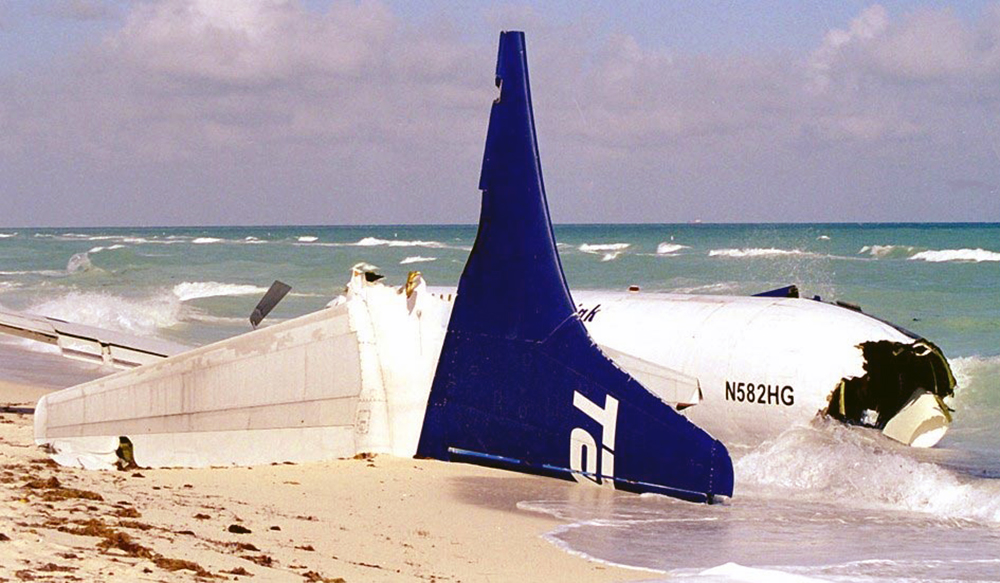
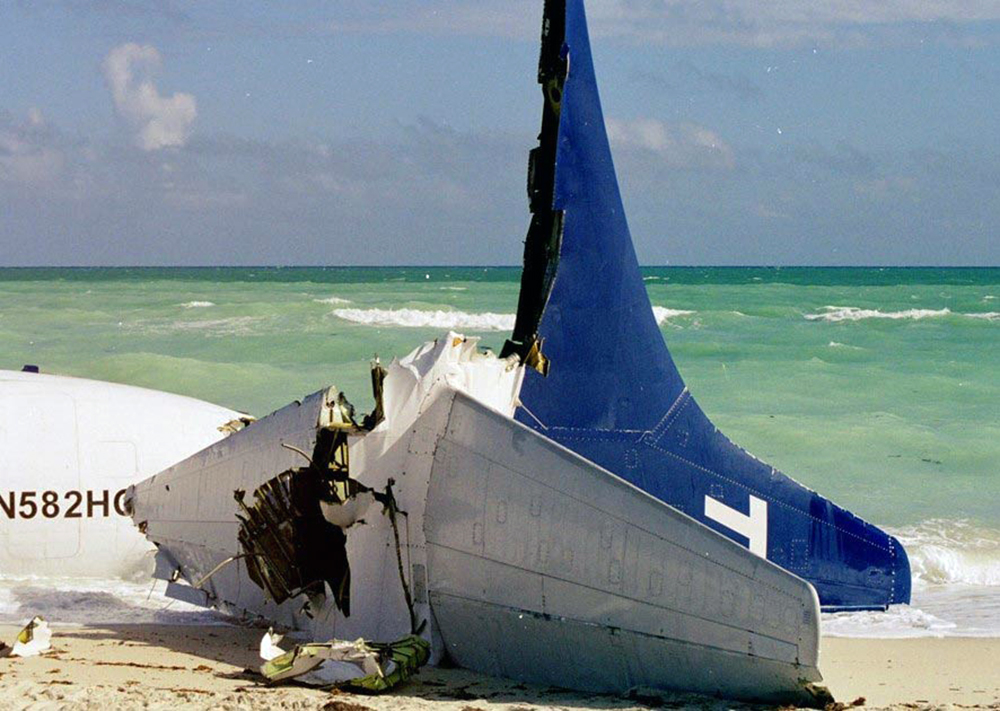

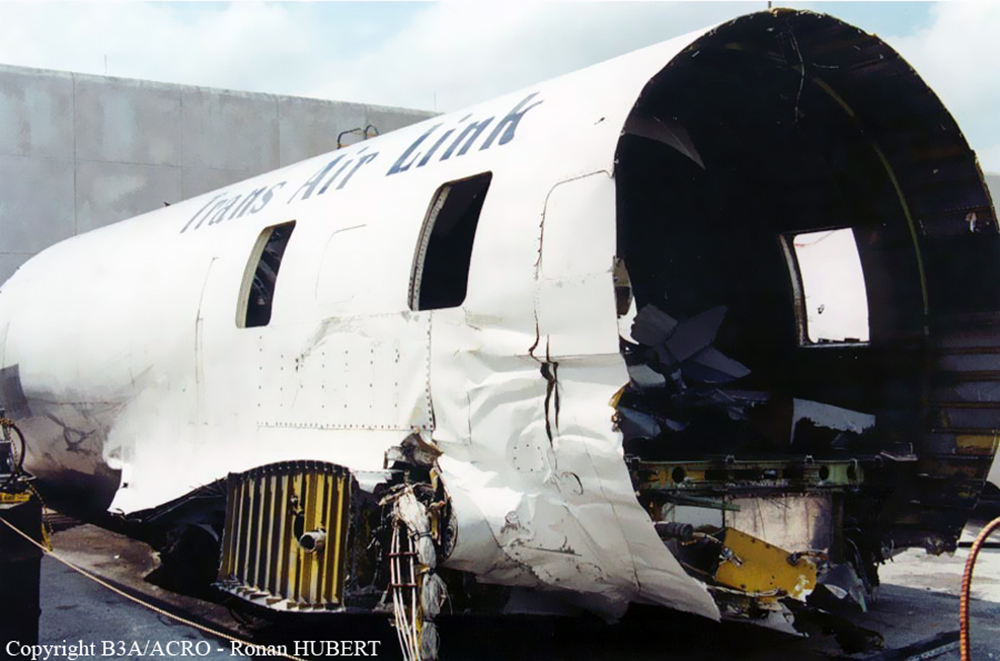
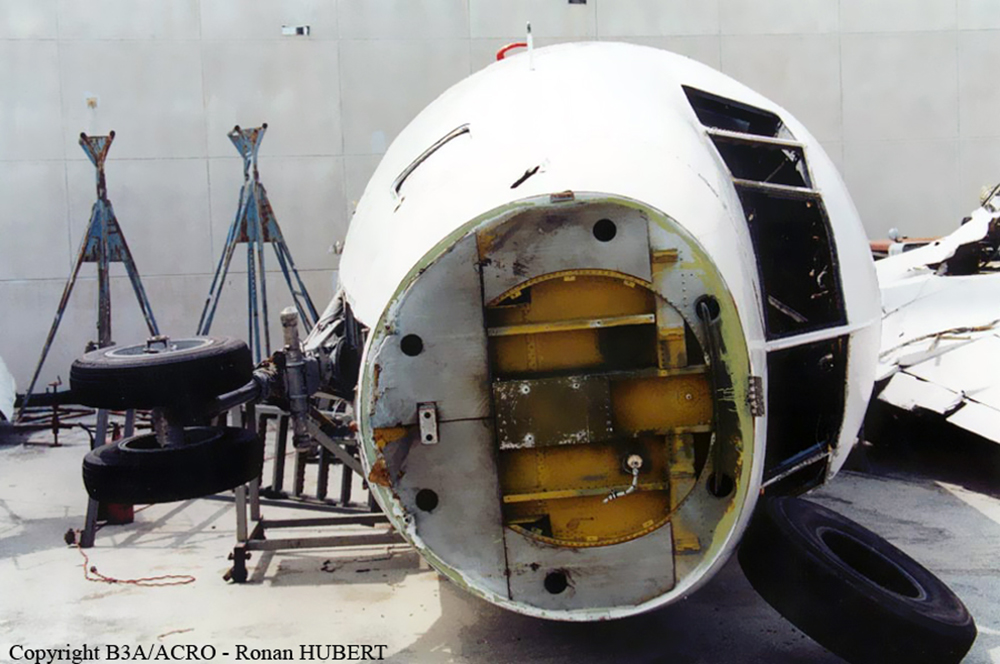
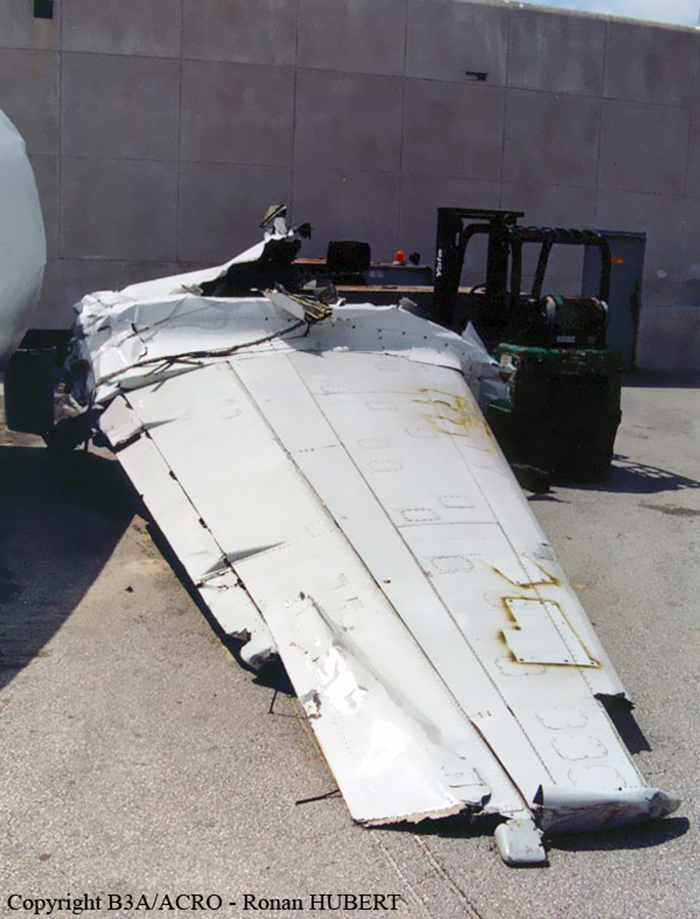
Crash of a Cessna 208B Grand Caravan off Fort Lauderdale
Date & Time:
Jul 6, 2001 at 1900 LT
Registration:
N812MA
Survivors:
Yes
Schedule:
Freeport – Fort Lauderdale
MSN:
208B-0553
YOM:
1996
Crew on board:
2
Crew fatalities:
Pax on board:
0
Pax fatalities:
Other fatalities:
Total fatalities:
0
Captain / Total hours on type:
1200.00
Aircraft flight hours:
5936
Circumstances:
While in cruise flight at 6,500 feet, the airplane's engine jolted and made a whining noise. The propeller stopped and feathered. Attempts to restore engine power were unsuccessful. An emergency was declared, and the airplane was ditched into the Atlantic Ocean 20 miles east of Ft. Lauderdale, Florida. The airplane was not recovered for post-crash examination.
Probable cause:
The undetermined malfunction of the propeller system.
Final Report:
Crash of a Beechcraft C90 King Air in Fort Lauderdale: 1 killed
Date & Time:
Jun 13, 2001 at 2122 LT
Registration:
YV-2466P
Survivors:
Yes
Schedule:
Charallave – Fort Lauderdale
MSN:
LJ-591
YOM:
1973
Crew on board:
1
Crew fatalities:
Pax on board:
2
Pax fatalities:
Other fatalities:
Total fatalities:
1
Captain / Total hours on type:
1800.00
Aircraft flight hours:
8279
Circumstances:
The Venezuelan registered Beech King Air C90 departed Caracas, Venezuela's Óscar Machado Zuloaga International Airport at 1516 eastern daylight time with a pilot and two passengers aboard, and flew to Fort Lauderdale-Hollywood International Airport, Florida. The route of flight filed with air traffic control was: after departure, direct to Maiquetia, thence Amber Route-315 to Bimini, thence Bahama Route 57V to Fort Lauderdale. The {planned} flight level was 220, and the pilot stated that 7 hours 15 minutes of fuel was aboard. Immigration/customs general declaration papers found aboard the wreckage stated the flight's intended destination was Nassau, and the pilot's daughter stated he always stopped at Nassau for fuel on many previous trips. After 6 hours 6 minutes, the aircraft crashed into a highway abutment about 1,700 feet short of his intended landing runway at Fort Lauderdale with total accountable onboard fuel of 3 to 4 gallons. One passenger received fatal injuries, one passenger received serious injuries, and the pilot received serious injuries. Engine factory service center disassembly examination revealed that the engines and their components exhibited no evidence of any condition that would have precluded normal operation, precrash. No precrash abnormalities with the propellers, their respective components, or any other aircraft system component were noted. Type certification data sheets for the C90 state that the unusable fuel aboard is 24 lbs., (3.6 gallons of Jet-A fuel).
Probable cause:
The pilot's failure to properly plan fuel consumption and to perform an en route refueling, resulting in a total loss of engine power due to fuel exhaustion while on downwind leg for landing at eventual destination, causing an emergency descent and collision with a highway embankment.
Final Report:
Crash of a Beechcraft 200 Super King Air off Bimini: 2 killed
Date & Time:
Sep 19, 1999 at 1115 LT
Registration:
YV-385CP
Survivors:
No
Schedule:
Fort Lauderdale - Caracas
MSN:
BB-740
YOM:
1981
Crew on board:
1
Crew fatalities:
Pax on board:
1
Pax fatalities:
Other fatalities:
Total fatalities:
2
Aircraft flight hours:
1841
Circumstances:
A Beechcraft 200 Super King Air, YV-385CP, crashed into the Atlantic Ocean about 9 miles southwest of Bimini, Bahamas, while on personal flight. Visual meteorological conditions prevailed in the area at the time, and an instrument flight rules flight plan was filed. The aircraft was destroyed, and the commercial-rated flight instructor and a pilot-rated passenger were both fatally injured. The flight originated from Fort Lauderdale International Airport, the same day, about 10:53. At 11:14, the pilot of YV-385CP told FAA ARTCC that he was experiencing an emergency, and he asked for immediate directions to Bimini. There were no further communications. According to radar information, at 11:13:33, the altitude was about 23,600 feet, and at 11:14:58 it had descended to 2,800 feet. Sound spectrum analysis of an FAA re-recording of communications between the pilot and ATC, indicated there were electronic signatures present, attributable to propeller noise, at cruise setting, for that type of aircraft. Records obtained from Venezuela indicated that earlier, YV-385CP had been involved in an accident, and had incurred extensive structural damage. The aircraft had been repaired in Venezuela, and was subsequently flown to the Unites States for additional repairs. Records obtained from the U.S. repair station indicated that the airplane incurred an extensive maintenance history, with needed repairs including damaged wiring, and leaks in the fuel system, as well as structural leaks, which had lead to several pressurization difficulties.
Probable cause:
Due to lack of evidences, the exact cause of the accident could not be determined.
Crash of a Grumman G-21A Goose in Fort Lauderdale: 1 killed
Date & Time:
Mar 25, 1999 at 1139 LT
Registration:
N5548A
Survivors:
Yes
Schedule:
Watson Island - Fort Lauderdale
MSN:
1150
YOM:
1942
Crew on board:
1
Crew fatalities:
Pax on board:
1
Pax fatalities:
Other fatalities:
Total fatalities:
1
Captain / Total hours on type:
520.00
Aircraft flight hours:
13136
Circumstances:
The pilot was receiving a competency flight in the seaplane from an FAA inspector. The pilot was returning to their initial departure airport, descended to 1,000 feet, contacted the control tower for landing instructions, and was instructed to enter on a right base. Before he could acknowledge the landing instructions the engines started to make loud, rough, and unusual noises. The pilot informed the control tower that he was 2 miles south , declared an emergency, and stated he had a bad engine on the left side. The FAA inspector stated the pilot started the emergency procedure, the manifold pressure and rpm was fluctuating. The inspector could not determine the dead engine by the dead foot, dead engine method, because her rudder pedals were stowed. She pointed out a pasture and the pilot stated they were going to the water. She did not recall the pilot shutting down the engine or feathering the propeller. She could not recall the final seconds of the flight. The airplane collided with a tree, canal bank, and came to rest inverted in the canal. Examination of the airframe and flight control systems revealed no evidence of a precrash mechanical failure or malfunction. Examination of the left propeller revealed it was not feathered. The No. 6 front forward spark plug ignition lead was disconnected from the spark plug. The ignition lead shroud threaded coupling on the No. 4 front forward spark plug was unscrewed and the carbon wire was exposed. The left and right engines were removed from the airplane and transported to an authorized FAA approved repair station. The left engine was placed in an engine test cell. The engine was started, developed rated power, and achieved takeoff power. The spark plug lead was removed from the No.6 forward cylinder. The left magneto had a 125 rpm drop during the magneto check. The right magneto had a 75 rpm drop. The magneto drop exceeded the allowable drop indicated by the engine overhaul manual. The right engine was placed in a engine test cell. The engine was started, developed rated power, and achieved takeoff power. Review of the FAA inspectors FAA Form 4040.6 revealed she was not Event Based Current (EBC) for the 4th quarter of the Flight Standards EBC program, and she did not meet the EBC quarterly events required by the end of the 14-day grace period. FAA Order 4040.9 states for an FAA inspector to be eligible / assigned to perform flight certification job function they must be EBC current., and inspectors should not accept assignments without being in compliance with the FAA Order. Managers and supervisors should not assign inspectors who are not current. The FAA inspector's supervisor was aware that the inspector was not current. He contacted the FAA Safety Regulation Branch, FAA Southern Region Headquarters, and stated that FAA Southern Region indicated that the inspector could administer the checkride. FAA Southern Region stated at no time did they approve or agree to an operation outside the parameters of the FAR's, Inspector Handbook or FAA Order.
Probable cause:
The pilots failure to correctly identify an in-flight emergency (fluctuating manifold pressure and rpm due to a disconnected spark plug lead / unscrewed ignition lead shroud) and failure to complete the engine shutdown procedure once it was initiated (propeller not feathered). This resulted in a forced landing and subsequent in-flight collision with a tree, dirt bank and canal. Contributing to the accident was the FAA inspectors improper supervision of the pilot, and the improper supervision of the inspector by her supervisor, in his failure to follow written procedures / directives in assigning a non-current inspector to conduct a competency flight.
Final Report:

Crash of a Cessna 402B off Pahokee: 3 killed
Date & Time:
Dec 8, 1998 at 1902 LT
Registration:
N788SP
Survivors:
No
Schedule:
Fort Lauderdale - Pahokee
MSN:
402B-1312
YOM:
1978
Crew on board:
3
Crew fatalities:
Pax on board:
0
Pax fatalities:
Other fatalities:
Total fatalities:
3
Captain / Total hours on type:
8.00
Aircraft flight hours:
7940
Circumstances:
The flight departed Fort Lauderdale's Executive Airport (FXE) at about 1833 on a northwesterly heading for the co-located Pahokee VOR/airport (PHK) on the second training session of the day for the 2 front seat occupants. This particular flight had a dual purpose, in that the left seat occupant/new-hire was getting a 'pre-check ride' by the right seat occupant/instructor/PIC, and the instructor was being observed by the air taxi's director of operations in anticipation of an endorsement for an FAA designation as a company check airman. The flight was not in contact with any ATC facility and was squawking a transponder code consistent with non-controlled, VMC flight. At 1902, the Miami ARTCC lost radar contact at the 334 degree radial/12 nmi from the PHK VOR at 1,300 feet agl. Eight days later, the wreckage with its 3 occupants still inside, was located and recovered from the lake bottom. The location roughly corresponds with the radial of the PHK VOR that would have to be tracked while performing the VOR Runway 17 approach. The wreckage was intact except for 2 nacelle doors, the nose cone, and the left propeller, and revealed no engine, airframe, or component failure or malfunction. There was no evidence of a bird strike. Evidence revealed that both engines were developing power and the airplane was wings level in the approach configuration and attitude at water contact.
Probable cause:
The pilot's failure to maintain adequate altitude during the approach.
Final Report:




